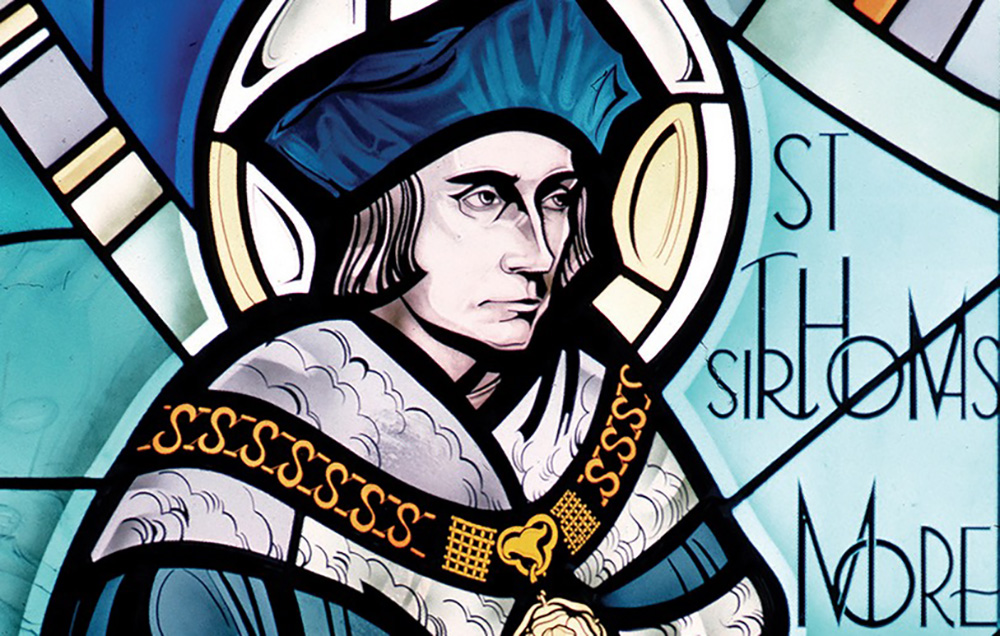St. Thomas More (1478-1535) is most widely known for his defense of Christ’s teaching on the Sacrament of Marriage. It was a complicated case, but one that ultimately made him a martyr.
He resigned as chancellor to King Henry VIII of England, who had mandated himself as head of the Church in his realm. The king had separated from the Catholic Church because the pope would not sanction the annulment the king desired so as to obtain a new wife, whom he hoped would produce a male heir. More refused to recognize the king’s new marriage under oath, as was required by Parliament, and eventually he was imprisoned and put to death as an insubordinate guilty of treason. As he awaited his decapitation, More spoke the words that had haunted his conscience throughout the entire ordeal: “I am the king’s good servant, and God’s first.”
St. Thomas More sought all his life to do what God wanted above all else. Early in life, he contemplated abandoning his law career to join the Carthusian monastery near London. For several years he had joined them in the routine of their spiritual exercises. Throughout his life he continued practicing many of the spiritual and ascetic practices he learned during those years.
After careful prayer and discernment, St. Thomas More opted for a career in public service. More importantly, though, he felt called to the vocation of family as a husband and father.
In 1505, St. Thomas More married Jane Colt. Theirs was a happy marriage, but it came to an early end when she died six years later. Their marriage had produced four children.
To the surprise of many among his friends and family, St. Thomas More quickly remarried after the death of his first wife. Within 30 days he was wedded again, to a wealthy widow named Alice Middleton. He was of the strong opinion that his children needed a mother to care for them. Many disliked Alice, but, nonetheless, St. Thomas More’s friend and fellow Renaissance man Erasmus of Rotterdam described the marriage as a happy one.
St. Thomas More also opened his home to three other young girls as well. In addition to Alice’s daughter from her first marriage, St. Thomas More became a foster father to two other girls, including Margaret Giggs — the only member of his family present at his execution. She was also able to take More’s headless body for burial — laid to rest in an unmarked grave at the St. Peter ad Vincula chapel at the Tower of London.
Perhaps considered to be ahead of his time, St. Thomas More believed it necessary to provide his daughters with the same education as given to his son. A man of supreme intellect himself, the saintly scholar desired the best for his children’s formation.
Beyond his work in government and law, St. Thomas More was also author of numerous scholarly works. These included a theological critique of Protestant reformer Martin Luther and the controversial political satire novel “Utopia.”
Even when he was away from home, St. Thomas More desired to foster the relationship with his children by writing them frequently and encouraging them to do the same. For a man of his stature and recognizing the demands put upon his time, this speaks volumes of his love for his children.
St. Thomas More was canonized in 1935 along with St. John Fisher — the bishop of Rochester, England, martyred for upholding Christ’s teaching on marriage in the wake of King Henry’s VIII’s divorce and its subsequent fallout with committed Catholics.
St. Thomas More is a saint for adopted children and widowers and his feast day is June 22.
Michael R. Heinlein is editor of Simply Catholic. Follow him on Twitter at @HeinleinMichael.

